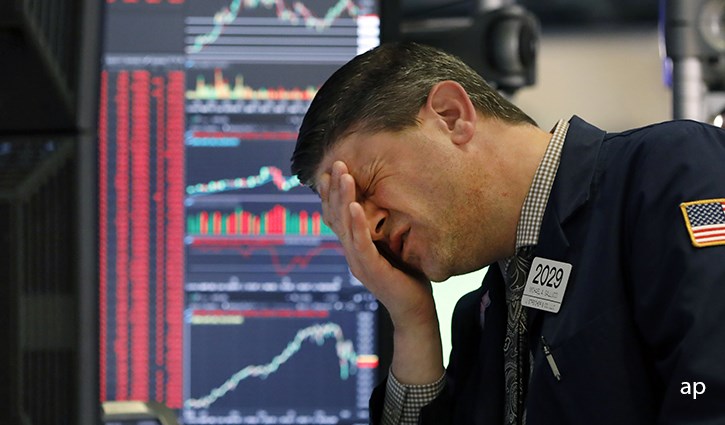
Emerging markets (EMs) demonstrated resilience in 2020 as the Emerging Market Equity category returned 13%. Yet year-to-date (June 18) the category has been lacklustre and returned 3.87%. Long-time emerging market specialist Matthew Strauss acknowledges that while the sector faces a number of challenges, he believes that better days lie ahead.
“Emerging markets rallied into the first six weeks of 2021. But then there were a few broad, important macro changes that had an impact,” says Strauss, senior vice-president at CI Global Asset Management Group, a unit of Toronto-based CI Investments Inc., and lead manager of the silver-rated 5-star $195.8 million CI Signature Emerging Markets Class F. Strauss, a 20-year industry veteran who came to Canada in 2004 and joined CI in 2011, is part of a 5-person team that oversees in aggregate about $2 billion in EM assets spread across several funds and accounts.
Three Main Macro Changes
“One macro change came out of China,” Strauss continues. “In February, it became increasingly clear that policymakers, both on the fiscal and monetary policy side, were thinking of slowly removing policy stimulus as the economy has recovered very well since the pandemic. They have not come to the point of removing the stimulus. But they have not added any more [stimulus] either.”
Since Chinese stocks were driven by cheap liquidity, the possibility of rising rates spooked retail investors who are a dominant force in that market. “Given that China is the single biggest country weight [40%] in the benchmark MSCI Emerging Markets Index, policy and liquidity changes are important changes for the asset class,” says Strauss, a native of Namibia who attended University of Stellenbosch, outside of Cape Town, South Africa, where he earned a Bachelor of Commerce in 1994 and an MA in economics in 1996.
Uncertainty about Chinese stocks has weighed on Strauss’s fund. Year-to-date (June 18) it has returned 3.42%. On a longer-term basis, however, the fund has outperformed the category. As of June 18, the F class fund returned an annualized 14.41% over five years and 7.96% over 10 years. In contrast, the category returned an annualized 10.55% and 5.83% respectively.
The second factor that has caused stress for EM stocks was rising long-term interest rates in the U.S., as fixed income markets responded to massive stimulus packages from the Biden administration that were aimed at reviving the COVID-battered economy. “Over the last few decades emerging market assets have struggled in an environment when U.S. monetary policy is tightening. Some periods became a real struggle for EM assets and some find it a temporary setback. But higher US rates it is not a favorable environment for EM. And it’s something we are watching very carefully.”
To add to the woes, Strauss points to subsequent waves of COVID in countries such as Brazil and India that only put more pressure on EM stocks. “There was a concern that the expected recovery in EM, except for China and Northern Asia, might be delayed. These three factors were at the core of the lacklustre performance.”
Valuations are Attractive
Looking ahead, however, Strauss sees better days ahead as vaccination rates increase and he expects that EM will slowly return to normal. “What we saw in the U.S. late last year and early 2021, EM outside of Asia should start experiencing that in the second half of 2021 and into 2022. We expect stronger growth out of Latin America and India during this period. That would open up interesting opportunities for EM equities.” Strauss says the outlook is positive for EM and that “returns of 10% for a base case scenario [over the next 12 months] would not be unrealistic.”
In the meantime, Strauss sees a silver lining in the dark clouds over the asset class when he observes that equity valuations have come down and price-earnings multiples have fallen to around 14 times earnings, versus 17 times in February. “Historically, 14 times is expensive. But relative to the U.S. and Europe, emerging markets are not that expensive,” says Strauss, noting that U.S. stocks are trading around 22 times price-to-earnings. “Clearly, EM is less expensive than its developed market peers.”
A portfolio manager who blends top-down macro factors with bottom-up stock-picking, Strauss and his team focus on promising themes and industries, such as the accelerating trend to digitization and growing use of the Internet to conduct banking and leisure activities. On a sector basis, technology is the largest sector weight at 34.5%, followed by financial services 17.5%, consumer goods and services 14.4%, and industrial goods and services 12.71%. From a country perspective, China is the largest market weight at 40%, followed by Taiwan 11.6%, South Korea 10.3% and India 5.7%.
The team, which follows a growth-at-a-reasonable-price style, scans a universe of over 2000 companies and zeroes in on those in growth industries. Then they scrutinize management carefully. “Do we trust the financial reporting? Do we think that they can execute well on their business strategy? If they are in a competitive market, do we think this company can compete better than their competitors?’ says Strauss. When it comes to valuations, his team compares its estimate of a prospective company’s earnings against the market’s and determines if the stock is under-valued.
Stocks in Focus
Running a portfolio of between 60 and 80 names, and maintaining a turnover rate of about 100%, Strauss cites holdings such as XPeng (XPEV) or Xiaopeng Motors, a New York-listed Chinese maker of electric vehicles. “It’s one of the companies that we call a full-stack. They own the software, the hardware and the vehicle—and they bring the full experience to the market, which is exactly what Tesla [TSLA] does,” says Strauss, adding that XPEV was bought last year on the Initial Public Offering and currently trades at about 12 times enterprise value to sales, which is similar to Tesla’s valuation. “Xpeng is in its early stages of gaining domestic market share in a market that will grow very significantly.”
Strauss believes that 2021 will see about 2.4 million EV sales in China. Chinese officials have a target of five million vehicles, by 2025. “We are excited about the EV space, but know it’s very competitive. We believe that Xpeng is one of those auto manufacturers that will not only survive but gain market share over time in this fast-growing Chinese market.”
Another favorite name is Sea Limited (SE), a New York-listed Singapore-based Internet company that operates mostly in Southeast Asia through three distinct divisions: an online video gaming arm called Garena, Shopee the e-commerce division and SeaMoney, a digital financial services provider. “Online video gaming is where Sea began and it continues to be a very successful division,” says Strauss, noting that SeaMoney is still in its early stages.
“We know that internet platforms are growing around the world. But the investable opportunities in this space are very limited in Southeast Asia. Sea executes well and has a high growth rate,” says Strauss, adding that in 2022 earnings growth per share is expected to be about 55% higher than 2021.





















